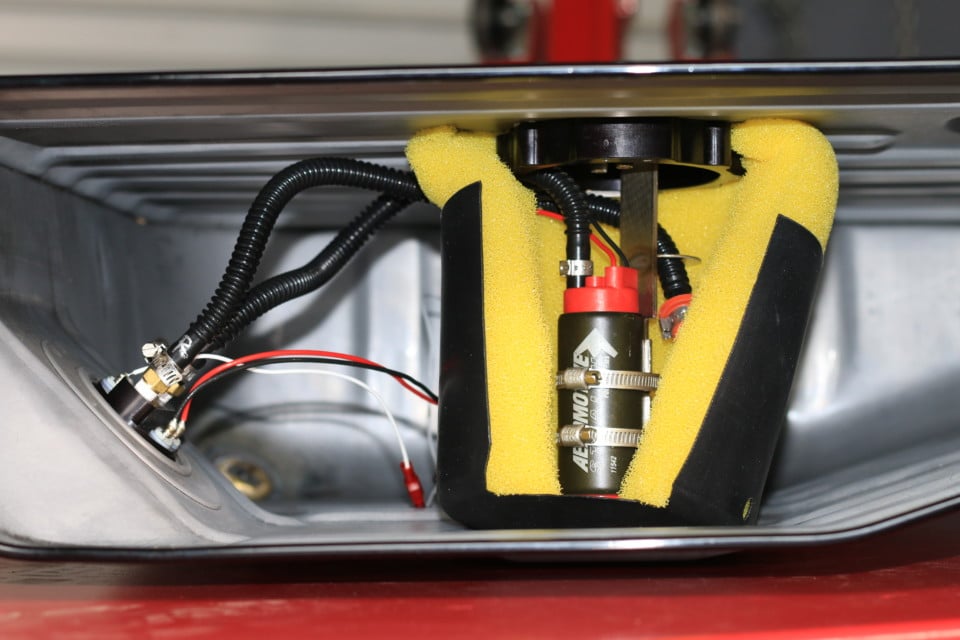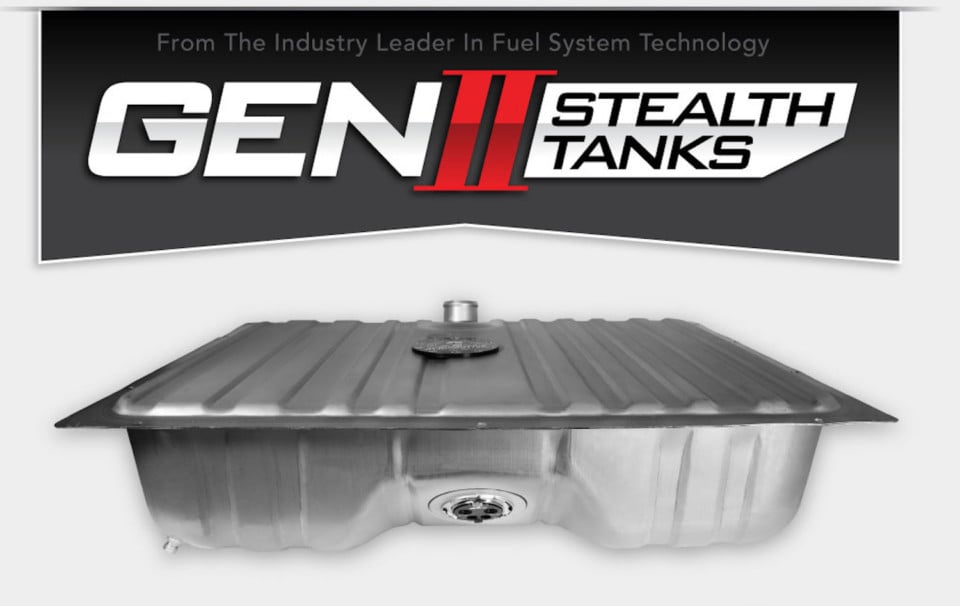 A few weeks ago the Street Muscle team got a sneak peek of something new from Aeromotive, and we were excited to get a closer look. Luckily, working in automotive media affords us the opportunity to see products before they hit the shelves, or online retailers. If we’re really lucky, we can sometimes get our hands on them. In turn, this allows us to keep our readers informed as to what is coming down the pipe from manufacturers. In this case, the product is the new and improved Gen II Stealth Tank. Our friends at Aeromotive hooked us up and sent over a sample for us to look at. Not only that, but they even sent us a cross-sectioned tank so we could examine the inner workings.
A few weeks ago the Street Muscle team got a sneak peek of something new from Aeromotive, and we were excited to get a closer look. Luckily, working in automotive media affords us the opportunity to see products before they hit the shelves, or online retailers. If we’re really lucky, we can sometimes get our hands on them. In turn, this allows us to keep our readers informed as to what is coming down the pipe from manufacturers. In this case, the product is the new and improved Gen II Stealth Tank. Our friends at Aeromotive hooked us up and sent over a sample for us to look at. Not only that, but they even sent us a cross-sectioned tank so we could examine the inner workings.
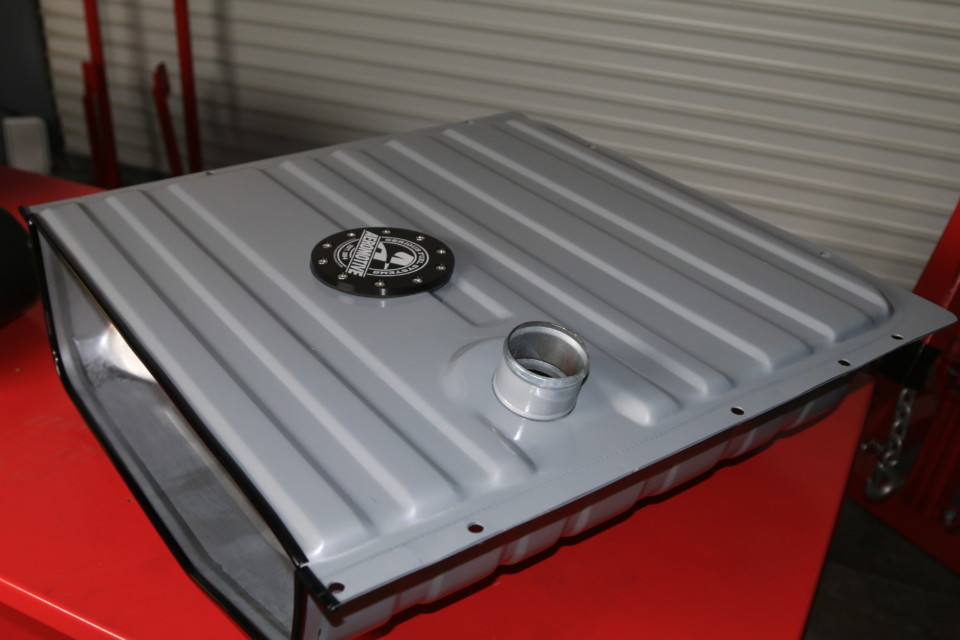
It’s not every day a manufacturer is willing to cut their own product in half to showcase it’s quality. That’s saying something.
The features and benefits of this tank and system are numerous. Of course, if you’ve recently upgraded your fuel system, or switched from a Carburetor setup to EFI, you have probably heard of Aeromotive’s Stealth Tanks before. However, this new system is designed to work with Carbs or EFI, so it’s got you covered either way, it would make a great solution for those of you who are looking to make the switch. The Gen II Stealth tanks show up to your door fully assembled. An afternoon spent in the garage, and you can be ready to roll.
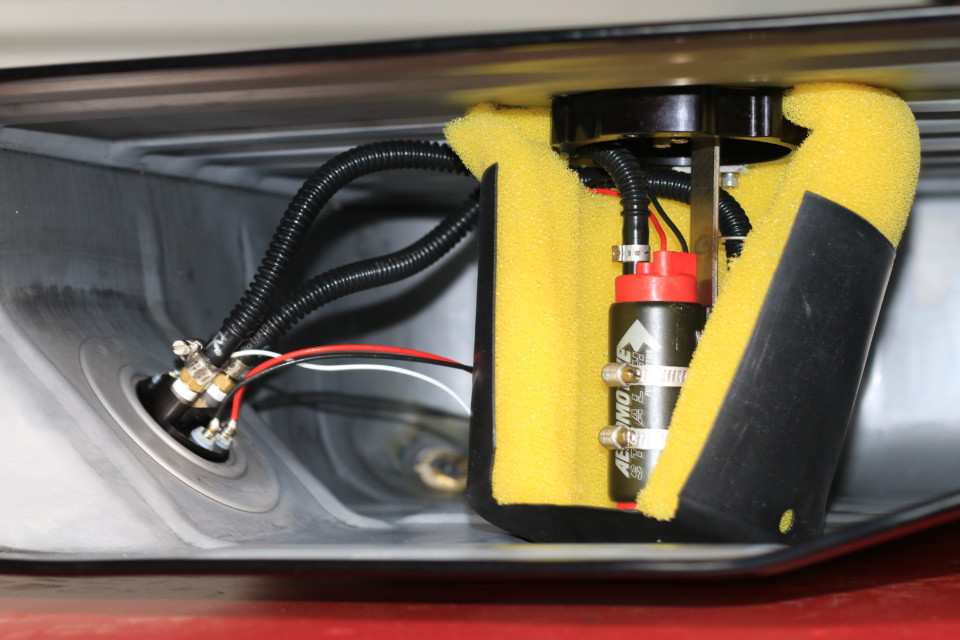
This cross section of Aeromotive’s Gen II Stealth Tank shows their Phantom Stealth Fuel System in it’s natural habitat. The pump, foam, and bucket all work together to ensure the pump is constantly submerged.
There are other tanks out there that can be had for a comparable price, but many of them require assembly, making installation and prep all the more labor intensive. So, are they really worth the trouble? If you’re looking for a tank that will drop-in place of your OEM tank, and require minimal prep work, this is a great option. Did we mention that it can be had for an economical price?
That’s right, the 200 lph Gen II Stealth Tank comes in under the $500 mark. For a few bucks more, you can grab the 340 lph model. If you’re car is equipped with EFI, the 200 lph model can support up to 600 hp naturally aspirated or 450 hp with a forced-induction setup. If you’re running a carb, the tank and pump can support up to 750 hp naturally aspirated, and 600hp with forced induction. Naturally, the 340 lph model ups those numbers to 850hp naturally aspirated, and 700 hp forced induction for EFI. For carbed motors, the 340 lph model can push it all the way to 1,000 hp naturally aspirated, and 850 hp with a power adder. So, whether you’re building a weekend cruiser, or a high-horsepower monster, Aeromotive has an option for you.
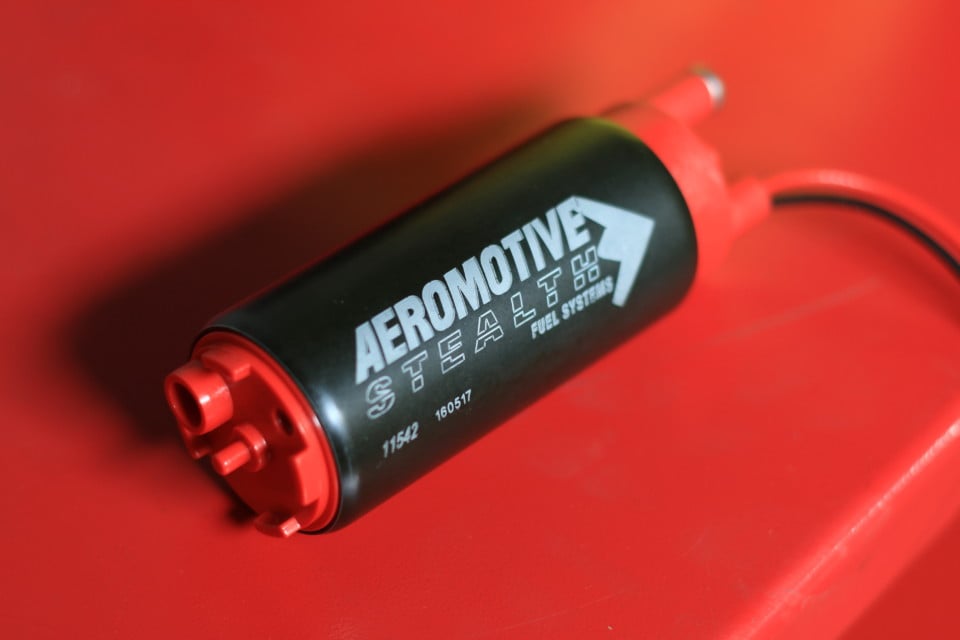
Available in two different flow options, the Gen II Stealth Tanks can be had in 200 lph, or 340 lph form.
If you were to try and get that performance by piecing together a similar kit, you would be spending quite a bit more. Not to mention, you’d undoubtedly end up having to modify the tank to fit the pump. If you chose to keep your stock tank and upgrade the pump to save a few bucks, you’d still run into the problems a rusty old tank has to offer, and again, modification. We’re not saying that you can’t; we’re just saying, why go to the trouble when Aeromotive has figured it out for you.
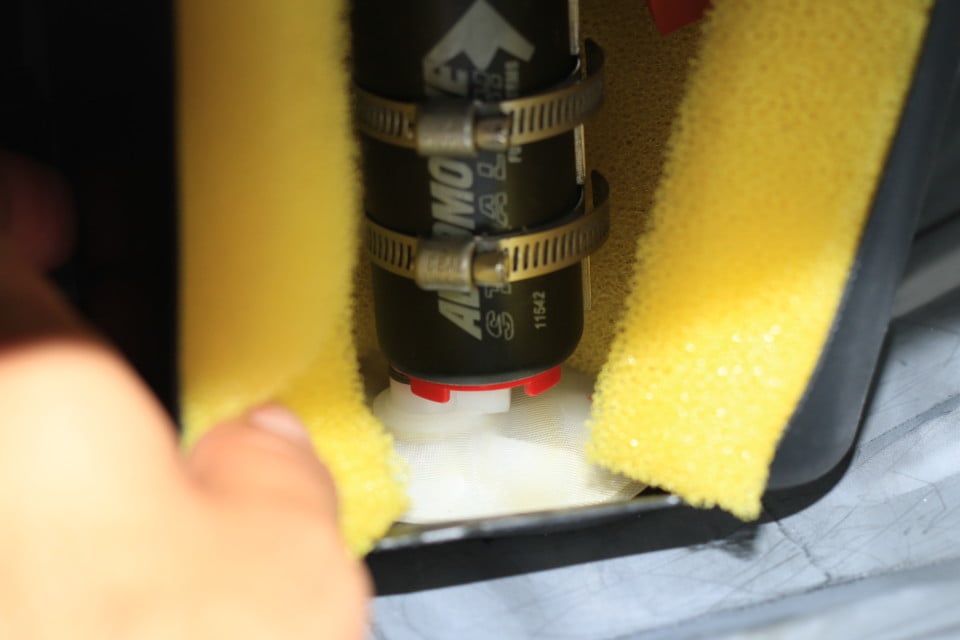
Keeping the pump submerged in fuel is the name of the game, and it’s something the Stealth Tank was designed to do.
For Example, let’s say you endeavor to make your own setup, comparable to the Stealth Tank, for a ’67 Ford Mustang. You can pay as much as $250 for the tank itself, and another $500 for the Phantom System. That totals out to about 750 greenbacks, not to mention all of the time you’d have to invest. You might be able to piece together something that works for less, but that’s not exactly a simple task. Plus, you wouldn’t have all the trick bits the Gen II Stealth Tank comes with, like the billet fuel pump cap, and convenient fuel outlet that makes wiring and plumbing a simple task. At the end of the day, do you want a cobbled together tank that simply works, or one that was engineered to work extremely well?
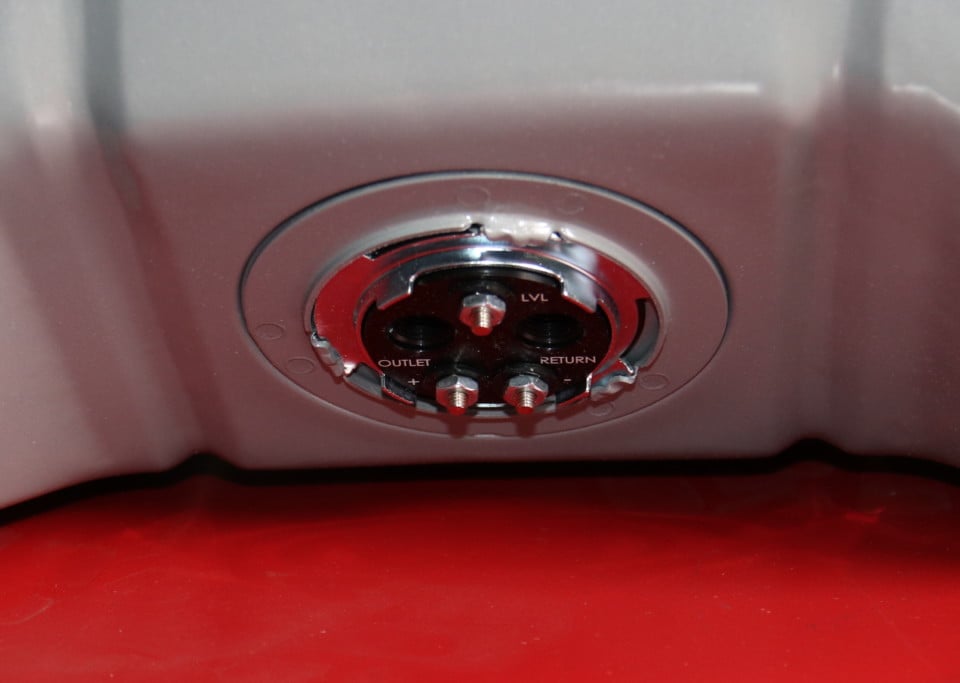
Installation couldn’t be more simple with only three wires and two fuel lines to connect in the stock location.
If you’re not already convinced the Stealth Tank is a great option, think about the ease of installation. If you were crazy enough to build one yourself, you still have a tough row to sow. After the fabrication for the in-tank fuel pump, you’d have to figure out how to wire and plumb the thing. We know, most of you are thinking; why go to all the trouble, we’ll just buy an external fuel pump.
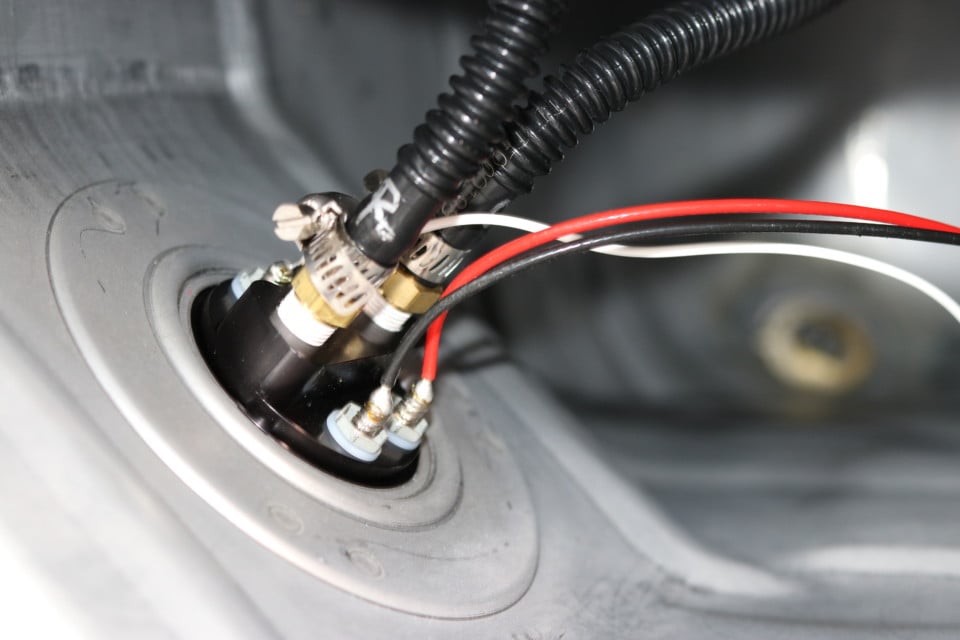
From the inside, you can see the simplicity behind the great value with the three wire and two-line setup connected to the billet fuel inlet and outlet.
That is one way to go. But, if you’re making the switch to EFI, like many of us are doing these days, you won’t be able to use an external pump without jumping through an exorbitant amount of hoops. Also, they are prone to overheating, causing the pump to cavitate and vapor lock. Besides, they’re so noisy! Sure, some of us enjoy that beautiful buzzing sound reminding us that our precious metal is being fed a steady stream of petrol…oh, wait, no we don’t. Seriously though, It can be annoying on a long trip.
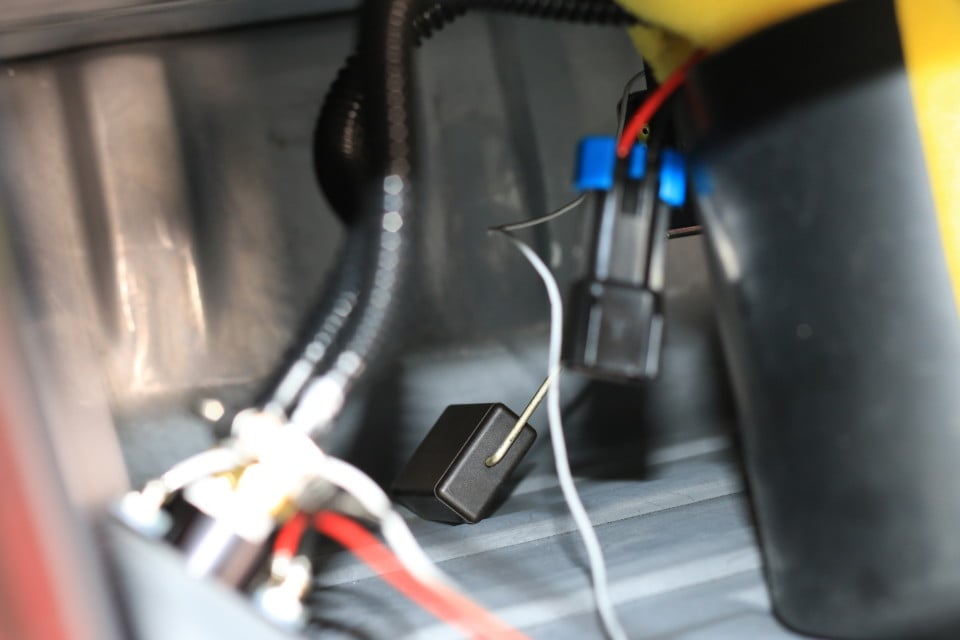
The system comes complete and ready to install, including the pump, baffle, bucket, and fuel-level sending unit. (Pictured here)
Not only do the foam and surrounding bucket quiet the noise from the pump, they also ensure the inlet of the pump is constantly submerged in fuel, even under hard driving conditions, or in the event there isn’t much fuel in the tank. Fuel sloshing back and forth within a tank can cause starvation and cavitation as well, which can be a detriment to the performance of your vehicle, and in some cases catastrophic. So, for those of you worried about it’s capabilities for your amateur autocross build, rest assured, the engineers at Aeromotive have addressed the issue.
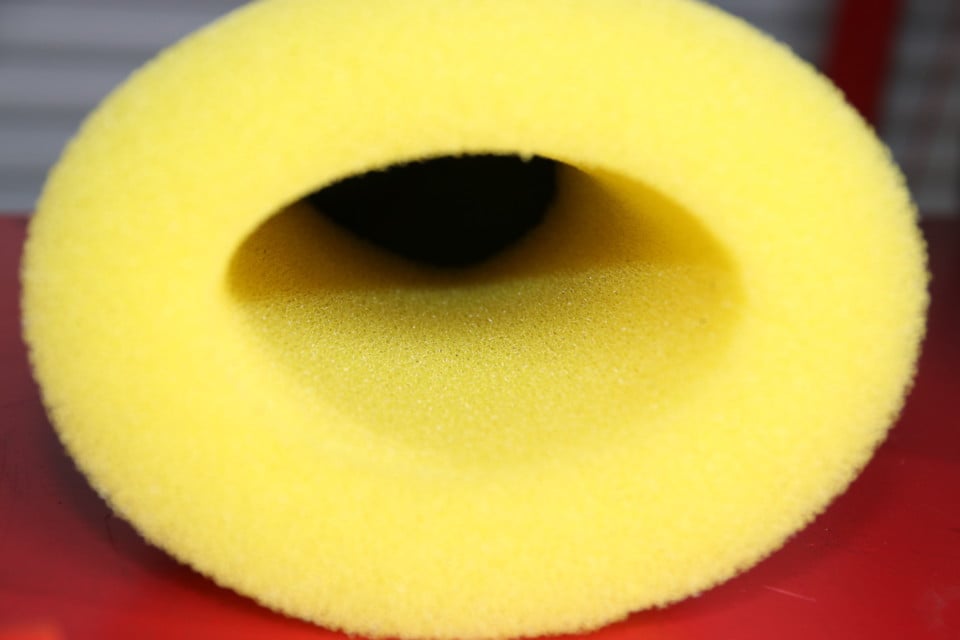
Without this foam and bladder, fuel slosh could introduce air into the system, cause starvation and cavitation, which can be catastrophic in some cases. The foam keeps the fuel pump submerged at all times, even under extreme driving or low fuel conditions.
With Aeromotive’s Gen II Stealth Tank, you don’t need to worry about all those headaches. The tanks come with the fuel pump, baffle, and fuel-level sending unit pre-installed and plumbed to a billet cap in the factory location. They also include their award-winning Phantom technology that prevents starvation, and combats that pesky buzzing noise.
Ultimately, the Gen II Stealth Tanks from Aeromotive are a no-brainer for anyone looking to upgrade their factory fuel system. Without giving up performance, you will save time and money with the added benefit of not having a cumbersome fuel cell taking up space in your trunk. The Stealth Tanks have an fantastic price point for the amount of technology they possess, and you know they’re quality because they’re coming from an industry-leading fuel system manufacturer.
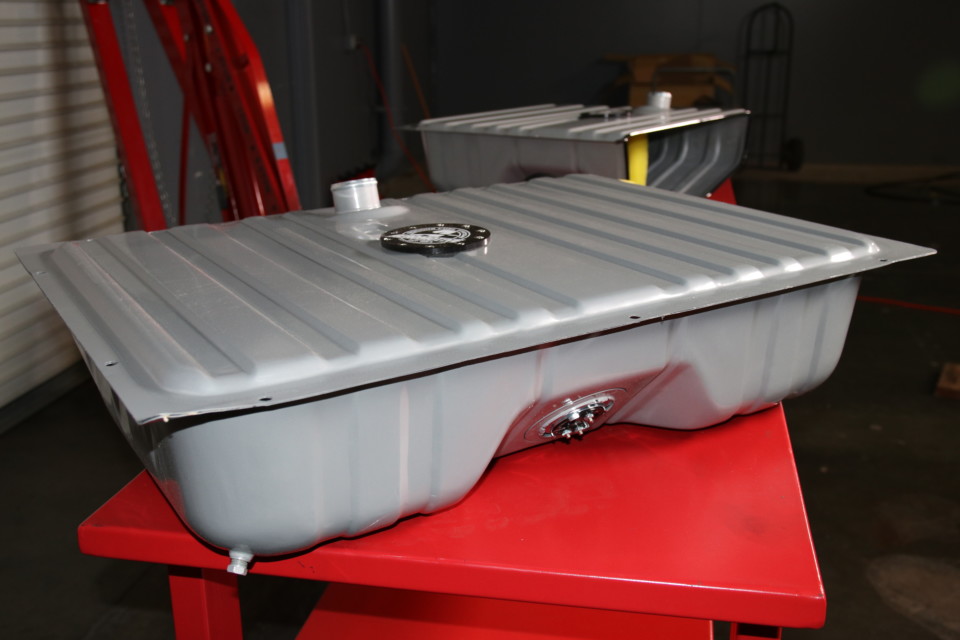
Fresh out of the box and ready to install, the Stealth Tank is a helluva bargain. Whether you’re making the switch to EFI, or simply upgrading from your old tank, the Stealth Tank is a solid choice.
Take it from us, we got our hands on one and we immediately admired the build quality, and the cutaway tank really let us do that. You can find out more about the Gen II Stealth Tanks, and all the other offerings from Aeromotive at aeromotiveinc.com. Below is a list of all the tanks slated to release in the coming months, so be on the lookout for one that fits your ride!
Available July 1, 2018:
64-68 Ford Mustang: 200lph #18197: 340lph #18497
64-67 Chevelle & Malibu: 200lph #18117: 340lph #18417
Available July 20, 2018:
70-72 Chevelle & Malibu, 70 Monte Carlo: 200lph #18102: 340lph #18402
67-68 Camaro: 200lph #18157: 340lph #18457
1969 Camaro: 200lph #18158: 340lph #18458
70-73 Camaro/Firebird: 200lph #18128: 340lph #18428
68-69 Nova: 200lph #18130: 340lph #18430
55-57 Chevy: 200lph #18199: 340lph #18499
Available Fall 2018:
64-67 Oldsmobile Cutlass: 200lph #18120: 340lph #18420
65-67 Pontiac GTO & 66-67 LeMans: 200lph #18121: 340lph #18421
1965 Pontiac LeMans: 200lph #18124: 340lph #18424
64-67 Buick Skylark: 200lph #18122: 340lph #18422
68-69 Olds Cutlass & Buick Skylark: 200lph #18101: 340lph #1801
71-72 Skylark, GS & GS 455: 200lph #18106: 340lph #18406
70-72 Cutlass, 70 Skylark: 200lph #18103: 340lph #18403
68-69 Chevelle & Malibu: 200lph #18104: 340lph #18404
68-70 GTO, LeMans & Grand Prix: 200lph #18105: 340lph #18405
71-72 GTO & LeMans: 200lph #18107: 340lph #18407
71-72 Monte Carlo: 200lph #18108: 340lph #18408
78-87 Buick Regal: 200lph #18149: 340lph #18449
78-88 Monte Carlo / Malibu: 200lph #18151: 340lph #18451
81-88 Cutlass, 2 Door: 200lph #18152: 340lph #18452
61-64 Impala: 200lph #18134: 340lph #18434
65-66 Impala: 200lph #18118: 340lph #18418
1964 Pontiac GTO: 200lph #18119: 340lph #18419
62-65 Chevy II/Nova: 200lph #18127: 340lph #18427
62-67 Chevy II/Nova: 200lph #18131: 340lph #18431
1970 Nova: 200lph #18133: 340lph #18433
71-72 Nova: 200lph #18132: 340lph #18432
73-74 Nova: 200lph #18136: 340lph #18436
75-79 Nova: 200lph #18137: 340lph #18437
74-77 Camaro, 74-78 Firebird: 200lph #18135: 340lph #18435
78-81 Camaro, 79-81 Firebird: 200lph #18138: 340lph #18438
70-74 Challenger: 200lph #18142: 340lph #18442
70-74 Barracuda: 200lph #18143: 340lph #18443
70-76 Dart/Duster: 200lph #18144: 340lph #18444
69-70 Mustang: 200lph #18147: 340lph #18447

